Workout of the Day
From 0-12:00:
Row 1000/800m
20 Clean and Jerks
From 12-24:00:
Row 1000/800m
15 Clean and Jerks
From 24-36:00:
Row 1000/800m
10 Clean and Jerks
Notes
This workout is a repeat from 4.15.22
Use three progressively heavier weights on the clean and jerks in today’s workout. The weights should feel “light”, “Medium” and then “heavy”. A few examples would be:
135/165/185
115/135/155
95/115/135
75/95/105
45/65/75
35/45/55
The Row should take 3:45-4:30 with each interval being about 8 minutes.
CrossFit Group Class Programming Template (WK6/9)

A couple of good dogs waiting for their humans to hurry up and finish the workout.
More than 10 years ago, a 22-year-old David Osorio became the proud owner of a CrossFit affiliate.
He started training people at 7 a.m. on Sept. 19, 2007, at St. Mary’s Playground in the Carrol Gardens neighborhood of Brooklyn, New York. The affiliate’s first workout was 5 rounds of 30 seconds at each of the following three stations: body-weight rows, 50-m sprints and PVC thrusters.
“I had known that I had wanted to own my own gym since I was 17. That was my plan,” Osorio recently explained during a visit to CrossFit Inc. in Northern California. “And I knew that I wanted to do something different and special and kind of community based and inclusive. But I didn’t really know what that was. I just knew that the model of gym that I was familiar with—that was not what I wanted to be, where people just sort of come in and do their own thing.”
Four years earlier, as Osorio pursued a degree in exercise science from West Chester University in Pennsylvania, he worked as a personal trainer at a local YMCA. There, a police-officer buddy told him about CrossFit.com. That was in 2003. Osorio dove in head first.
“I think I got a better education watching all the old videos and (CrossFit) Journal articles than I did in four years of college. It was just so intuitive. (I was) like, ‘Yes, this is it. This is exactly what I’ve been looking for.’”
He hatched a scheme: finish his degree, move to New York, open a CrossFit affiliate.
“And so I did.”
Today, CrossFit South Brooklyn is a thriving affiliate with classes tailored to its growing membership. These offerings include yoga, powerlifting and Olympic weightlifting, as well as classes dedicated to postpartum mothers, people who are 55 and older, and children. Over a decade, Osorio has solidified the foundation of what’s important to operating and growing such a business. The answer will be familiar to longtime members of the CrossFit community: Doing the right things for the right people for the right reasons.
Andréa Cecil: What was it like owning a CrossFit affiliate in 2007?
David Osorio: I started in the park with some equipment that I had made—some sandbags—some tires that I’d found, other things I could transport and some jump ropes. It was small. The only affiliates in the area were me and CrossFit NYC.
It what was easier then. It’d be harder to replicate it now just because there’s so many affiliates, there’s so many expectations of what an affiliate is. But back then it was like, “Oh, this is what CrossFit is—a dude in the park. OK, sure.”
The essence of what it was then is extremely similar to what it still is now. The classes back then would still be recognizably a CFSBK class in terms of what we do: question of the day at the start of class, then movement prep. Obviously, we were limited back then by lack of equipment and a facility, but I didn’t really see those as significant obstacles. People showed up and I would act as if I had a 10,000-square-foot facility. I was very matter of fact and people were on board. It was different. Over the 10 years a lot has changed, but the most quintessentially important things have remained the same in terms of how we nurture our members, the attitude we take, the humility we have. It hasn’t changed significantly in the ways that are most important.
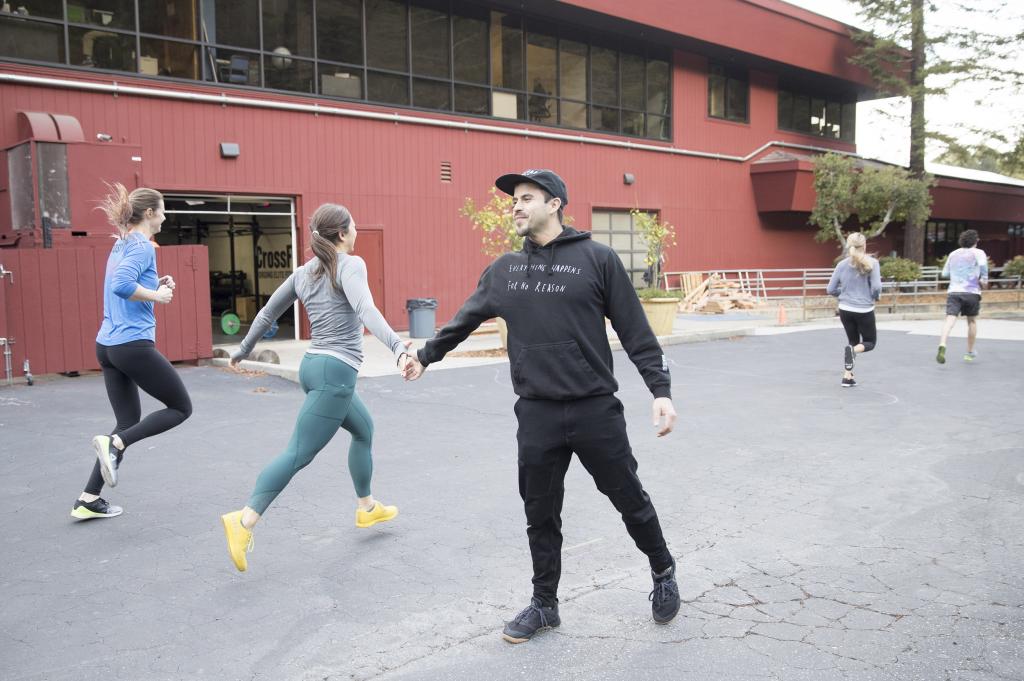 “I always let demand dictate my need to expand. I wouldn’t preemptively do big expansions or big equipment purchases.” —David Osorio
“I always let demand dictate my need to expand. I wouldn’t preemptively do big expansions or big equipment purchases.” —David Osorio
What prompted the move from the park to an indoor space—growing membership?
It was like 10 of us. But it was cold. It was New York. It’s December—people aren’t going to keep coming outside. I luckily found this place called the Brooklyn Lyceum. It was sort of a performance-arts space. It had these two floors. Each of them was about 5,000 square feet. It was kind of a rag-tag building. It was kind of falling apart, dilapidated in a lot of ways. But I was paying 25 bucks an hour, so if I got two people, I could make my money back on the hour. The owner gave me a little corner where I could put my equipment.
At the park, I was doing 20-dollar drop-ins. And I had saved enough money from the park that I could get some more equipment—some kettlebells, a couple barbells, some bumpers. Just very organically and gradually, it began to grow. One of the special things about starting in a park—starting so small—is that not only is it fun to progress but the members internalize the growth. They’re like, “We have a kettlebell now!” Everyone’s excited about that. It’s a win for the community. Every small, little step meant a lot to a lot of people, and they could see the affiliate growing. They could see: “Hey, I’ve been here for three months and now we can actually bench press. We have more jump ropes, we have this, we have that, we have another class.”
I always let demand dictate my need to expand. I wouldn’t preemptively do big expansions or big equipment purchases. I would ask myself, “What can I afford? What do we need most?”
When you moved to the Lyceum, were you running classes all day?
I started with between two and four classes per week. I was still working at Equinox to pay my own bills and support myself. Everything that the program made and everything that I could save additionally from my job at Equinox as a trainer, I would just funnel back into the gym. And when those handful of classes started to be consistently attended, I would add a class. I would just do that very gradually as demand warranted.
For the first four years plus, we had an honor-system membership that was 20 bucks. We had a little pencil pouch with a note that said, “Please leave $20.” We didn’t have any contracts, any memberships. It was just 20 bucks when you showed up to class. I look back now and our drop-in rate’s 25 dollars now. I think I’ve only raised prices once in 10 years because I felt confident I was providing a valuable service to people. I really felt like, “Even though we’re in a park or in this kind of dilapidated facility, members are getting the best.” And I coach with that attitude. I never was apologetic or thought “this is not sufficient.” When you take that attitude, people align with it.
Even when we moved into one of our current facilities, it included a desk someone had donated to me and the little pencil pouch with “Please leave $20”—people really found it sort of endearing. Every now and again someone would say, “I don’t think I’ve paid you in a couple of months.” And I was like, ‘All right, well, whatever you think you owe me, throw it in there.’” That really resonated. Now we have different membership rates and recurring monthly memberships. But we don’t do any long-term contracts. I came from a fitness background—the commercial fitness industry—where it’s hard to cancel your membership. You have to give them, like, three-months’ notice and then you have to sit in the sales office and they give you the hard sell. And I just hated that. I don’t want to sell memberships. I want to be a coach, and I want to have community. If I have to talk you into what we’re doing, then I’m not interested. Maybe this isn’t best for you.
We’re very flexible with our memberships in terms of not locking people into things. We’re very, very liberal with that. People really, really respect that. If you don’t want to come, there’s no financial obligation for you to come. People really like that. I’ve heard that a lot, where people are like, “I’ve never been to a gym where it’s an honor-system membership.” I think that speaks to the nature of the gym. Like, “Hey, we’re a family. If you’re in here, we’re gonna treat you like family. We’re gonna treat you like a member of the community. You’re not a client. You’re not a customer. You’re a member.”
In the beginning, when it was just me and one or two coaches, people had that ethical incentive to pay membership dues because “I want these guys to succeed. I want the gym to grow.” They’re invested emotionally in what we do.
Do you think an affiliate could start in a park today?
I think it would be much harder. You’d really have to leverage your personality, your coaching experience. When I started, I had already been coaching for several years. I had been personal training, I had my degree in exercise science, I had been doing this. So, I wasn’t green. I think that came across. I think if I was just some Joe Schmo in the park doing whatever, people would have thought, “This is not worth my time.”
Every situation’s different. I think you can make it work. But, again, you really have to leverage your own personality, your own coaching abilities, your ability to foster community. There has to be an emotional connection that draws that person back if they’re gonna come out on a cold day to the gym. Is it possible? I don’t know. I mean, I think it’s possible, but it’s harder now. It’s definitely harder now.
The only other thing I’d say is I think it’s less of a risk to go in on a space at this point, meaning back then it was like nobody knew what CrossFit was, and if I had one person per month asking “hey, what’s this thing about?” that was a lot. But now CrossFit’s more ubiquitous and there’s an expectation. There’s less financial risk. I did it because no one knew what this was. And I thought, “I’m not going to be able to buffer this.” I don’t have a business background, so in the beginning I was going with no partner, no investors, no loan, no debt—just completely bootstrap it because it has to have its own legs. It’s not like I’m gonna take a risk and hope for the best. If I have more equipment and more members, it’s because I’ve earned them.
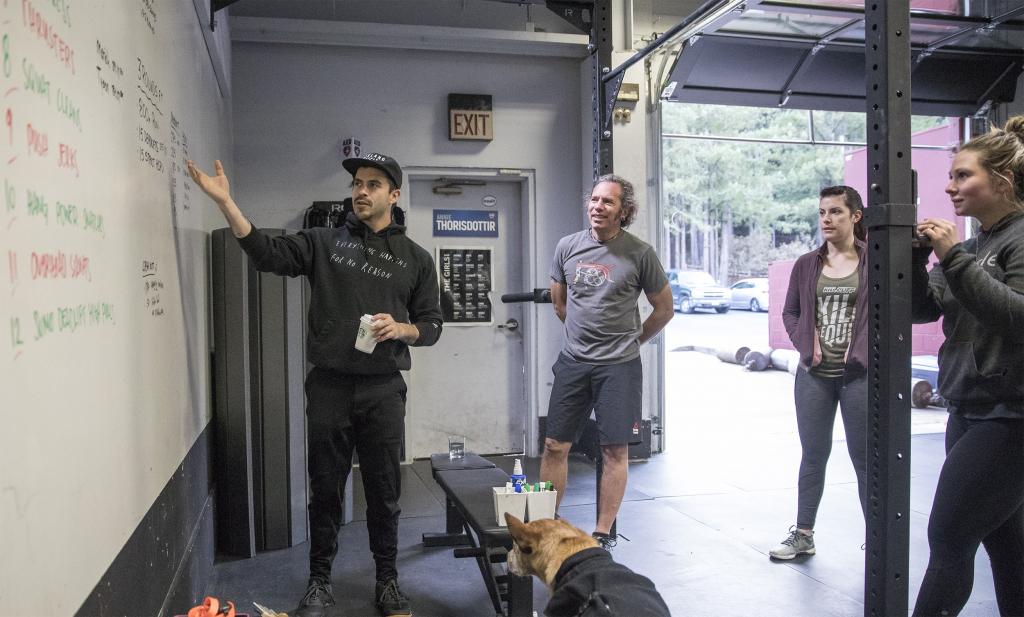 “Back then it was like nobody knew what CrossFit was, and if I had one person per month asking ‘hey, what’s this thing about?’ that was a lot.” —David Osorio
“Back then it was like nobody knew what CrossFit was, and if I had one person per month asking ‘hey, what’s this thing about?’ that was a lot.” —David Osorio
Tell me about the CrossFit South Brooklyn blog.
We’ve always been active on the gym blog. It’s been part of how we cultivated community and set the tone of our culture. That’s been a huge, huge part of it. It’s basically a scrapbook. Every single workout we’ve ever done—and rest days—we’ve posted on the blog with a picture from the gym and some links.
I tried to replicate the model I saw on CrossFit.com at the time—which got me so enamored with CrossFit in the first place. Our blog was a micro version of that in our own community. From early on, people would be on the blog, commenting. Again, it was like a scrapbook, so you can see over time, “Oh my gosh, we got one rower!” And it was this huge thing. We were so excited that we had a rower. And we were, like, a legit CrossFit gym now.
What are notable differences in operating an affiliate in 2007 and now?
Change is inevitable. You’re gonna have people who are like family, and they’re gonna come and go, and that’s the natural process of things. If you have strong values within your affiliate, that’s the most important thing—offering special services, being inclusive, being fun, being safe, being clean. But change is inevitable. If someone leaves your gym, you can’t take it personally.
Diversifying your programs is important because we’ve had members who have been with us for eight-plus years, and part of what keeps them there is there’s a lot to keep them stimulated. We have a variety of classes that we offer, specialty classes—from yoga to Pilates to StrongFit to powerlifting to Olympic lifting. It becomes this physical-culture hub where people come in and they’re like, “There’s so many things happening here. It’s so diverse.” We have masters programs, we have kids programs, and that diversity really enriches your gym. It enriches your community and it makes a space for everybody. So, when someone comes in, they might say, “Hey, I wanna try CrossFit but I’ve always been really curious about Olympic lifting as well.” We can have you do a hybrid program with an Olympic-lifting bias. I teach the intro class every weekend, and that’s one of the things that I highlight—that we have all these different programs. That’s a big thing for a lot of people—“Oh, wow, there’s a lot for me here.” It’s a really stimulating environment and a diverse environment.
The other thing is I came from the commercial fitness industry, and in most commercial training gyms there’s a lot of turnover. There’s a lot of people who are hobbyists who say, “Oh, I’m an actor but I’m doing this on the side. I’m moonlighting as a trainer to pay my bills until my big break.” I was always of the mindset that this is a career. So, I’ve tried to create an environment that I would want to work in—that was important to me. Would I work in this gym? Would I stay here? For our full-time coaches, the gym pays 80 percent of their health insurance. We have a health-insurance plan; we have a 401(k) plan, which we are matching; we have maternity/paternity leave; we have paid vacation; we have bonuses. You attract and retain good people if you make it hard for them to leave. And it feels like a career. A lot of times, affiliate owners will say, “OK, we need coaches. Who wants a free membership?” Coaches are ambassadors. During every class, every coach is an ambassador for your gym, and you can’t rely on people who are hobby coaches to run a successful program if you wanna be around for 10 years. I’m able to take a week off, and I don’t worry about what’s happening at the gym because I know that everyone is taken care of. People are there who are professionals who care about the gym, who think of it as a career rather than just a job.
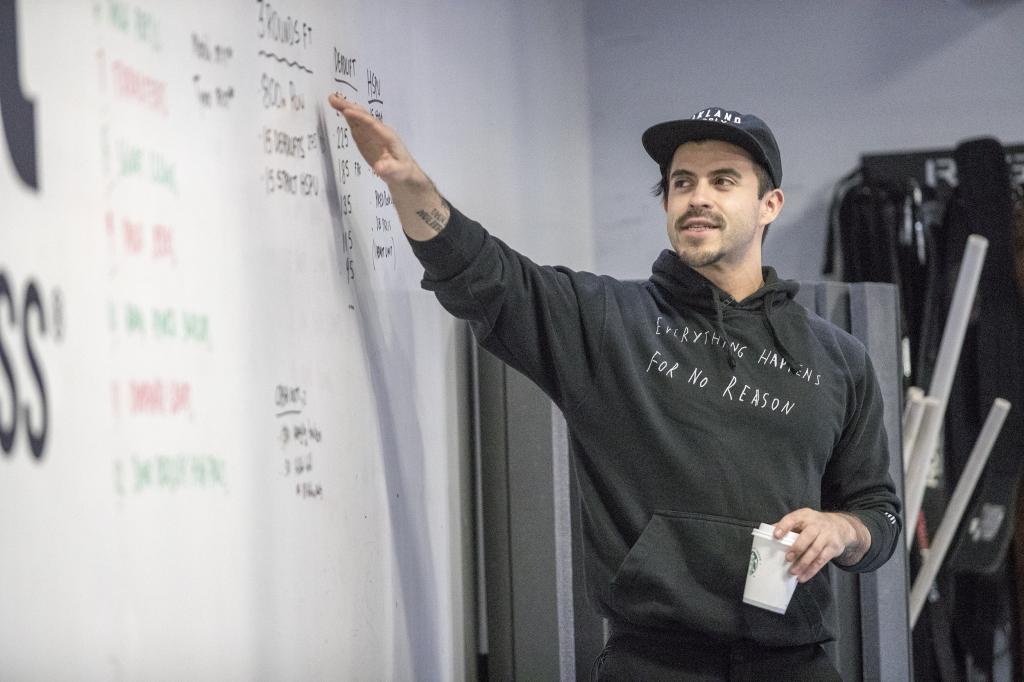 “We have masters programs, we have kids programs, and that diversity really enriches your gym. It enriches your community and it makes a space for everybody.” —David Osorio
“We have masters programs, we have kids programs, and that diversity really enriches your gym. It enriches your community and it makes a space for everybody.” —David Osorio
Do you think it requires a certain number of members to make that happen?
I don’t know what that number is, but I would say you have to show your coaches that you’re investing in them. And to have those conversations: “What do you need from the gym?” And then having an honest answer of “what can I actually give you?” What I hear is there’s a lot of ambiguity there. Like, “Oh, I’m just a part-time coach at this gym. I don’t really know where my career is going, if I’m going to be here for that long or what they can offer me.” It’s being honest with people and saying, “If you’re willing to invest in the gym and you can run classes well, maybe pick up some other administrative duties”—or whatever they might be interested in doing. It shows them you care.
It’s important when you work somewhere to feel like the company’s invested in you. From a small gesture of “hey, why don’t you take the week off? I’m gonna still pay for the classes you would’ve worked.” Whatever you can do. As you go—and all the other things are in place—you can begin to offer those more professional career incentives. Go toward that because that’s the best investment: your coaches.
What’s your single best piece of advice for young or rookie affiliates?
Investing in your coaches. And choosing them. Someone shouldn’t be a coach just because they said “hey, I wanna be a coach” and they’re a hotshot CrossFitter. You can teach most people how to coach. You can’t teach someone social skills or empathy. And you can’t teach someone what it really means to be in the service industry, to serve people. Identify the people in your community who have those inherent values and characteristics and then try to bring them up as much as you can.
I was just talking to someone who is a coach at an affiliate and she was really frustrated because there’s a lot of ambiguity about “where am I going with this? I teach these classes but there’s never a conversation (about) ‘where do you see yourself in five years? Where do you see yourself in two years? What do you wanna do with this? Do you wanna grow? Are you happy just doing what you’re doing?’” And the longer you do that, the more turnover you have. It’s hard to run a business with a lot of turnover. I would say make it a business that you would want to work in. If you weren’t the affiliate owner, would you stick around? If not, why wouldn’t you? What can you do to resolve that?
And you have to stay excited about it. You can’t get over it. You can’t be, like, too cool for school about it. You can’t be blasé about it. I still get excited to run intro class. I teach our free intro class every week. I love meeting people and giving them their first exposure to CrossFit. I like working with all our programs. I still coach a lot. I still do a lot of personal training. I take our group classes. I really want to be in the gym’s DNA. I’m not doing this so I can step away from it and not think about it anymore. I really enjoy the process. I enjoy taking classes and seeing what our members are experiencing. I really enjoy working with a variety of different people. It’s not a ticket for me to stop working; I’m creating an environment that I want to work in.
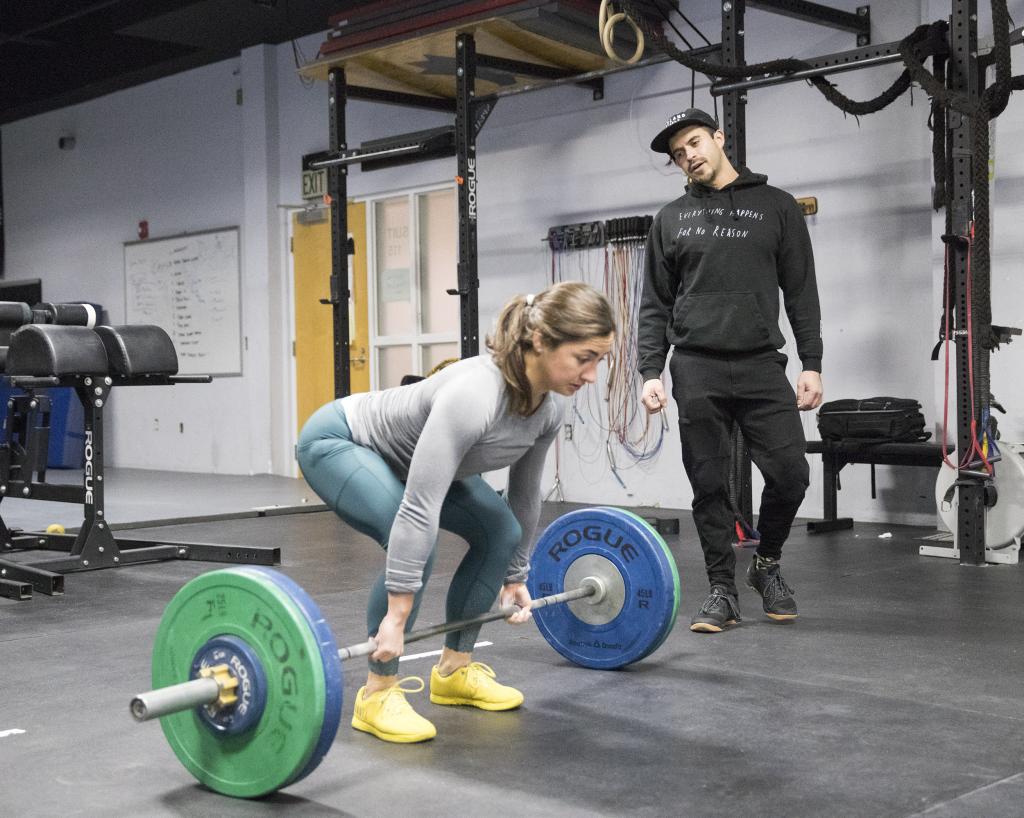 “I had a lot of confidence in our product. I had a lot of confidence in myself that I could give people a professional, inclusive and effective experience.” —David Osorio
“I had a lot of confidence in our product. I had a lot of confidence in myself that I could give people a professional, inclusive and effective experience.” —David Osorio
Did you envision growing CrossFit South Brooklyn to its current size?
I didn’t have a specific number ever. I knew I was going to be successful. That was the plan: To be successful. It was never, “oh, if I hit X number of people, I will have achieved my goal.” It was, “how big can I make this while maintaining the quality and the integrity that is essential to making the thing worthwhile?” So, it’s like if it got to a point where it’s like, “Man, classes don’t run on time, and no one knows each other, and the coaches are tuned out, and it’s this revolving door of members,” but I have 1,000 members, that doesn’t mean you’re successful—despite the membership number.
For me, expanding was responding to the demand. Same thing when we were in the park, same thing when I was in the Lyceum. It was like, “OK, there’s demand for more space, more programs. What can we do to facilitate that?”
I had a lot of confidence in our product. I had a lot of confidence in myself that I could give people a professional, inclusive and effective experience. “We’re going to keep growing this thing as long as people want to sign up for it”—that was the plan. I didn’t want to say, “OK, I just want this little gym with 100 members and I’m good to go. That’s all that I want.” As long as we keep growing, I’m going to keep doing whatever I can—bending over backward—to maintain the integrity and the quality of the program. I don’t have a goal. The membership number—that’s the result. The important thing is the focus and the integrity and all that stuff. The membership size is just a byproduct.
There’s some parallels between ecology and running a CrossFit affiliate, maybe any business. In an ecosystem, there’s something called “carrying capacity” for a particular population. If this room is a garden, it might be limited to just the available square footage, the biodiversity of the plant that an animal is feeding on. So, what can we do to increase our carrying capacity? Maybe it’s space, maybe it’s more equipment, maybe it’s playing with the hours, maybe it’s having more coaches. My philosophy has always been assessing what the carrying capacity is, and if there’s a demand for more, what can we do to increase that carrying capacity—again while maintaining the vision of what we’re trying to create.
How do you go about managing so many members?
It’s the culture of the staff—our front-desk staff to our coaches to our cleaning staff. People feel an emotional ownership of the gym, so they have a personal investment in doing right by people. It’s a million little things. It’s like I walk into the bathroom; I notice some toilet paper on the floor. I’m gonna pick it up, throw it out. Or the toilet seat is dirty; I’m gonna wipe it down. Or someone comes in, they look a bit confused. I’m gonna walk over and start a conversation with them, make sure they know what’s going on. It’s these constant little gestures and practices that you do. You know, 850 (members) doesn’t seem that different than 300. It doesn’t feel that different to me because we do the same thing.
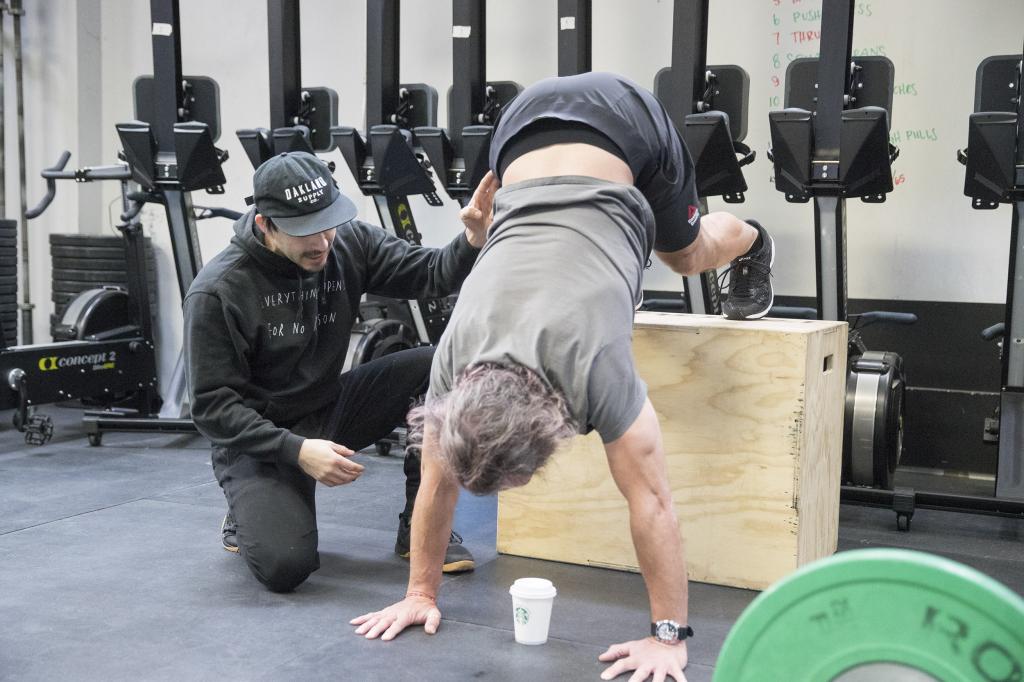 “You don’t want a watered-down program. So you create those options, those tiers for people to engage in the program at the level that’s appropriate for them.” —David Osorio
“You don’t want a watered-down program. So you create those options, those tiers for people to engage in the program at the level that’s appropriate for them.” —David Osorio
How do you address athletes’ varying skill levels within the same class?
We have leveled programming. Out of 100 people, maybe 10, at most, are doing muscle-ups, for example. The leveled programming works really well to cast that broader net of inclusivity. So, we would say, “OK, the Performance side is doing muscle-ups and deadlifts. The Fitness side is doing a push-up, a push press and then deadlifts.”
That is a tool to help us be as inclusive as possible, but we don’t avoid these quintessentially CrossFit movements that we want to have in our program. If you never program muscle-ups, there’s a bunch of people who want to do muscle-ups and want to work on muscle-ups, and they have the capacity, and that’s something they want to strive for. You don’t want to take that away from people. You don’t want a watered-down program. So you create those options, those tiers for people to engage in the program at the level that’s appropriate for them.
I think it comes down to this: You have to create as little ambiguity as possible, meaning, “This is the workout. This is Option 1, this is Option 2, this is Option 3. You’re probably going to be most appropriate doing Option 3 if X, Y, Z. Does anyone have any questions? If you’re not sure, come ask me. Let us know.” So having clear ways to engage with the programming, clear options and, at the same time, opening yourself up for questions. We always end the whiteboard brief with “if you have any questions, let us know. Come ask me right after this brief and I will tell you what we think is best for you.” And then also being present. If you see that person who’s looking around like, “What am I going to do here? Everyone’s doing handstands. I don’t know,” you ask that person, “Hey, what are you thinkin’ for this workout?” It’s having clear options in the programming and what you offer.
What are your future plans?
I’m not interested in expanding to a new market or having multiple gyms. I love what I do, and I’m just gonna keep doing it. We just keep doing what we do and very fortunately we continue to grow. Maybe it stays at 800, maybe it gets bigger—I don’t really care as long as I can provide for our employees and create a space that we want for our members. That’s all I care about. If I retire, I’d want to go coach at an affiliate—and I’m doing it.
Anything else you want to add for affiliate owners reading this?
There’s something that’s uniquely human about a CrossFit affiliate, meaning people are coming in and they’re vulnerable. They’re putting themselves in a vulnerable position. So you really have to lead the way with empathy and love and think of it as a family. Try to do right by them. Be fair, listen to your members, have a vision and a plan, but don’t get so caught up in the way things should be done. Communicate with the membership and communicate with your coaches. Always have that dialogue. How can we make this thing better? How can I make you happier? How can I make you more successful? Because it’s not about me. It’s about them. I serve these people. And then if you can apply those values to your approach as well—if we’re serving these people—everybody wins.
Again, it’s a uniquely human experience. There’s that balance of professionalism. Yes, you’re running a business. You want to provide for people, you want to be professional, have a facility established, et cetera. But the human element of it is so quintessentially important that it is a tribe, it is a community, it is a culture, it is a family, and if you approach it with that, I don’t think you can not be successful.
Editor’s note: Questions and answers edited for space and clarity.
About the Author: Andréa Maria Cecil is assistant managing editor and head writer of the CrossFit Journal.
All images: Dave Re/CrossFit Journal
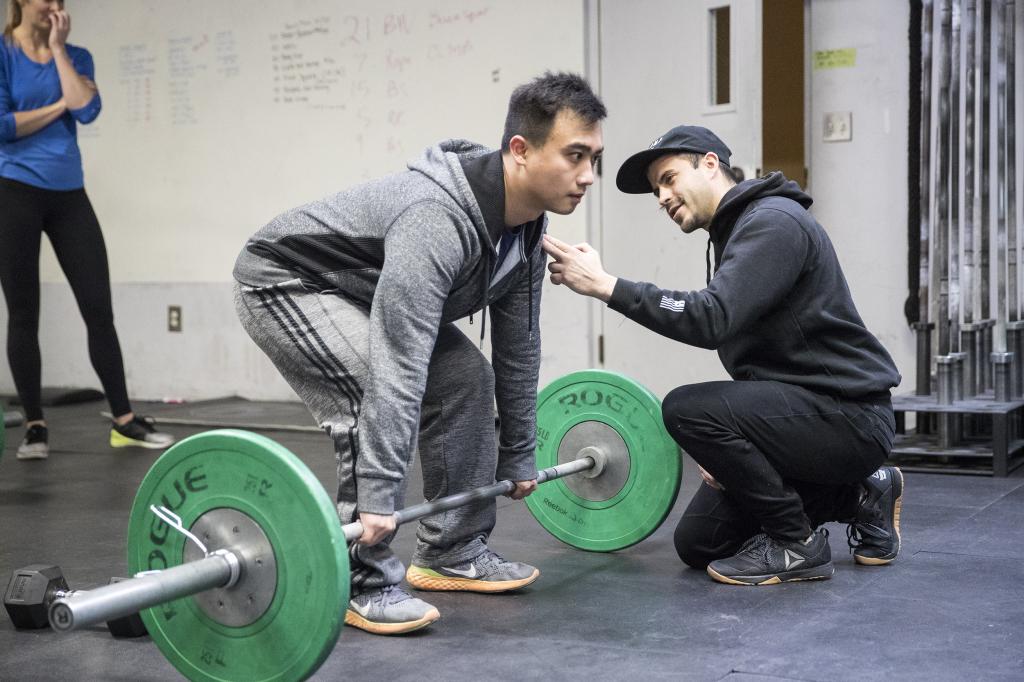
Great interview!
What an amazing story. What a great American success story. Love reading this history.